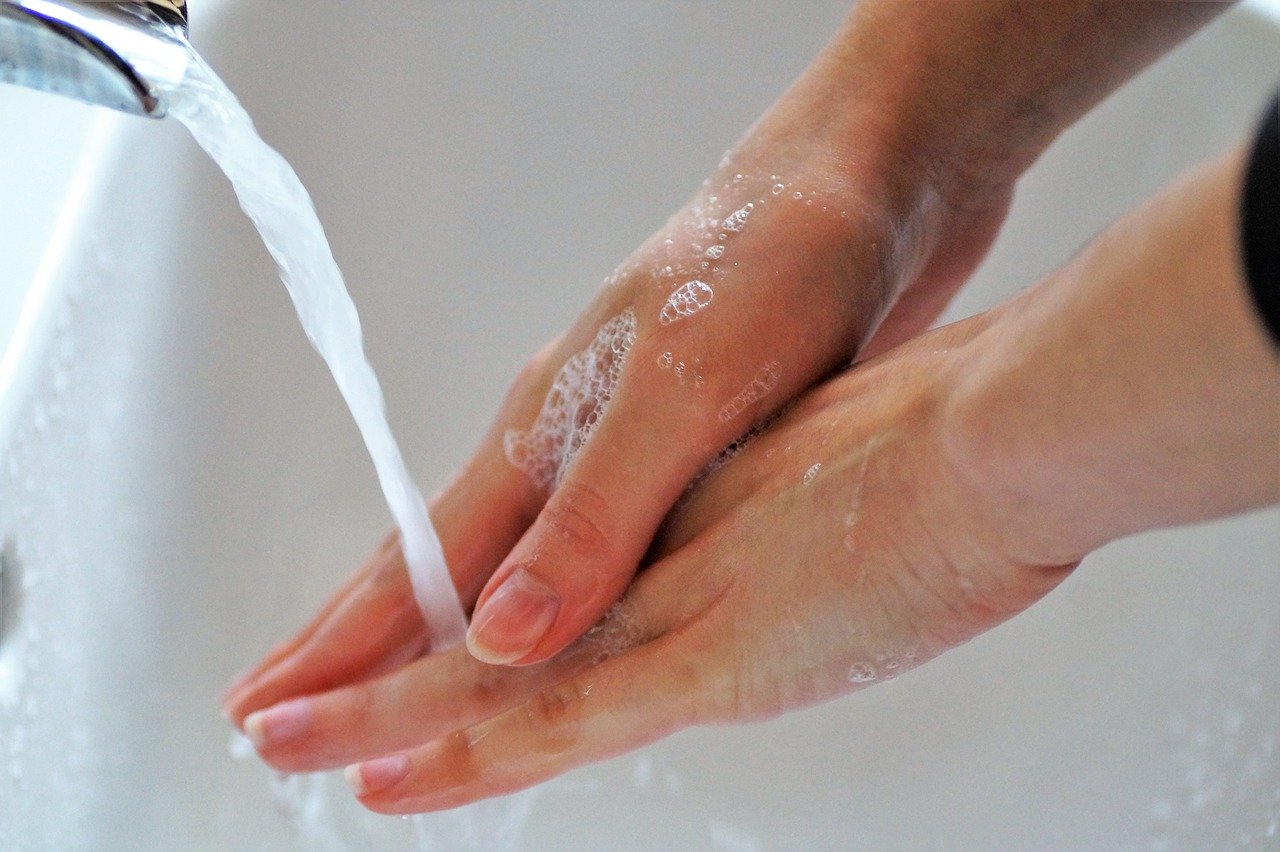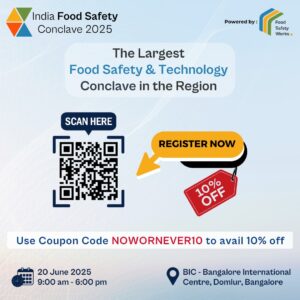Food is an essential commodity and the industry cannot stop, COVID-19 or not. If anything, the breakdown in the traditional supply chain means increased demand for processed/packaged food so that people can stock up during the times of uncertainty. This also helps prevent people from having to go out often. But, running the unit to keep up with demand during such times comes with great responsibility, both towards your people and your customers.
Viruses require a living host and COVID-19 multiplies on human host. The COVID-19 virus attacks the respiratory tracts and typically enters the human through by touching eyes, nose and mouth So ensuring the virus does not move from human to human is key to prevention. And if it does get transmitted, detecting and isolating the person is key. The symptoms may vary from mild flu to a severe respiratory tract infection and being alert can really help manage the pandemic.
So what can FBOs do to maintain the supply and also protect their people and the customers? Following are some guidelines on what needs to be done to get your operations going safely.

- Develop a COVID management team and a team leader with clear roles and responsibilities so that you can react quickly in case of detection of infection.
- Ensure you have enough of resources available before resuming or while running your operations. Running operations with resource crunch only encourages people to take shortcuts which can increase your risks.
- The uncertainty in the supply chain needs special attention. It is important to verify if your suppliers can fulfill your stock required. If they are not ready, then new suppliers need to identified. For new suppliers, revisit your hazard analysis so that you don’t disturb the stability of your process. Plan your production in a way that orders are placed at a time to avoid multiple vehicle movement. Make enough space for storing incoming material.
- While pricing may not be the most obvious thing to think about, but the unavailability of ingredients coupled with no flexibility on pricing can encourage adulteration. Do keep a track of the pricing point of your material. Prepare a list of adulterants that can be added to your existing or new ingredient . Check on the certification, ingredient list and the systems / processes that are in place. A stringent check on the raw material that is received from a new supplier, allergens that are used in the facility becomes critical.
- The movement of vehicle and the drivers entering the premises increases your risks. So it is important to educate the drivers and restrict their movement within the premises. Ensure all the visitors / drivers coming in are well informed on the procedures to follow.
- Cleaning & Disinfection is important to avoid cross-contamination. The way to fight COVID is by increasing the frequency of cleaning and sanitization / disinfection. Identify the critical areas with highest touch points and the decide on the new frequency of cleaning. This should also be done using the right chemical at the right concentration levels. For the type of chemical and its usage, follow manufactures instructions. The list of disinfectants that are effective against COVID 19 can be found on https://www.epa.gov/coronavirus/disinfectant-use-and-coronavirus-covid-19
- Human contact being the main source of transmission of this virus, everything that is touched and accessed by humans, needs to be planned very carefully. Starting from entry of food handlers/ employees / visitors drivers and/ or any other service providers or contractors.
- Entry should be restricted to need basis only. Ensure every person entering the premises passes the personal hygiene check and has gone through COVID 19 symptom screening. Introduce a system of temperature check and monitoring of all the person entering the premises using an IR thermometer (Temp shall not exceed 37.5C) and other symptoms like cough, breathing difficulties. If biometric system was used for the attendances, replace the same with a security person taking the attendance.
- Conduct training on a regular basis. Train food handlers on Hand wash, how to wear and dispose mask, personal hygiene and social distancing, symptoms of COVID and precautions. A daily briefing to the food handlers on the do and don’t is suggested. Display signage to help food handlers understand the rules.
- Social distancing is something that must be maintained while running the operations. To maintain physical distance of at least 1 meter start looking at places where chances of contact is higher. Chair placement for cafeteria is where you could start, along with enforcing staggered breaks for the employees. All personal items should be separated which can be achieved by numbering or coding them on racks where they should be placed. Self-service should be avoided and replaced by packed lunches. To maintain the social distancing in the locker room, there should be a cap on the number of people who can enter at a time. If this is slowing down the entries, an extra room can be converted into locker room. However, ensure that this does not increase the risks. Within the locker rooms, mark the lockers at a distance which can be used simultaneously by the food handlers to maintain physical distance. Lateral distance between the adjacent hand wash station needs to be marked as well.
- The frequency of hand washes needs to be increased. PPE like mask, gloves, cap must be available in sufficient quantity.
- Where there is maul manual handling in the production line, ensure that the distance of 1 m between two food handlers is maintained. If required decrease the speed of the production to ensure physical distance is maintained. Physical barriers, marking using tapes / paints are good signage help maintain physical distance.
- Risk associated with suspended pest control needs to be considered. Any change in pest control plan should be checked with the expert before implementing the same.

COVID-19 brings additional risks to the operations. So ensure you have analyzed all the potential risk and mitigation plan is in place, along with the correction and corrective action, if the planned activity fails. Do maintain records of any noncompliance and follow the PDCA cycle to make sure risks are minimized and production is carried out without any hurdles.
If you would like us to come in and assess your preparedness, please reach out to us at covid19@foodsafetyworks.in

About the Author: Sarika Agarwal is the Managing Director and Principal Consultant at Food Safety Works. Over her career spanning 15+ years, she has helped clients effective food safety manage systems.

